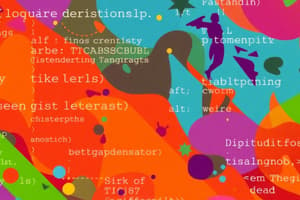Podcast
Questions and Answers
Which of the following characteristics best describes object-oriented programming languages?
Which of the following characteristics best describes object-oriented programming languages?
- They strictly follow a linear flow of execution without branching.
- They are primarily focused on the execution of mathematical operations.
- They are based on the concept of immediate code execution.
- They consist of self-contained units known as objects. (correct)
What is a defining feature of functional programming languages?
What is a defining feature of functional programming languages?
- They utilize interpreters during the code execution.
- They are based on functions and expressions that produce values. (correct)
- They restrict the use of variables to enhance performance.
- They focus primarily on the visual aspects of programming.
What does the term 'algorithm' refer to in programming?
What does the term 'algorithm' refer to in programming?
- A collection of programming syntax rules.
- An automatic code optimization technique.
- A step-by-step procedure to solve a specific problem. (correct)
- A predefined set of programming languages.
How does a programming language facilitate communication between humans and computers?
How does a programming language facilitate communication between humans and computers?
In which of the following scenarios would scripting languages be most beneficial?
In which of the following scenarios would scripting languages be most beneficial?
What is the primary goal of computer programming?
What is the primary goal of computer programming?
Which of the following languages would be classified as object-oriented?
Which of the following languages would be classified as object-oriented?
What does 'syntax' refer to in programming languages?
What does 'syntax' refer to in programming languages?
What does time complexity measure in the context of algorithms?
What does time complexity measure in the context of algorithms?
Which of the following best describes space complexity?
Which of the following best describes space complexity?
Which sorting algorithm would likely perform the best on large datasets that are mostly sorted?
Which sorting algorithm would likely perform the best on large datasets that are mostly sorted?
How does a binary search algorithm operate?
How does a binary search algorithm operate?
Which programming technique simplifies problems by dividing them into smaller subproblems?
Which programming technique simplifies problems by dividing them into smaller subproblems?
Which of the following correctly describes data structures?
Which of the following correctly describes data structures?
What is the primary purpose of error handling in programming?
What is the primary purpose of error handling in programming?
What is the primary goal of dynamic programming?
What is the primary goal of dynamic programming?
Which statement accurately defines constants in programming?
Which statement accurately defines constants in programming?
Which of the following is characteristic of greedy algorithms?
Which of the following is characteristic of greedy algorithms?
In optimization problems, what is the aim of the algorithm?
In optimization problems, what is the aim of the algorithm?
What role do comments serve in a program's code?
What role do comments serve in a program's code?
In the context of program structure, what is a utility or helper function?
In the context of program structure, what is a utility or helper function?
Which best describes pseudocode?
Which best describes pseudocode?
Why is proper structuring of a program important?
Why is proper structuring of a program important?
What was the primary reason for choosing the name 'Python' for the programming language?
What was the primary reason for choosing the name 'Python' for the programming language?
What is the significance of the I/O section in programming?
What is the significance of the I/O section in programming?
Which of the following is a benefit of installing Python from the official Python website?
Which of the following is a benefit of installing Python from the official Python website?
How can you verify that Python has been installed on a Windows system?
How can you verify that Python has been installed on a Windows system?
When did the implementation of Python begin?
When did the implementation of Python begin?
Which installer type should you choose based on your Windows system architecture?
Which installer type should you choose based on your Windows system architecture?
What role do variables play in programming?
What role do variables play in programming?
What is one advantage of installing Python from the Microsoft Store?
What is one advantage of installing Python from the Microsoft Store?
What is the main purpose of control flow in programming?
What is the main purpose of control flow in programming?
What year was Python first released?
What year was Python first released?
Which statement best describes debugging?
Which statement best describes debugging?
What simple program is mentioned as a beginner's introduction to Python?
What simple program is mentioned as a beginner's introduction to Python?
What is the significance of functions in programming?
What is the significance of functions in programming?
How is algorithm analysis primarily concerned?
How is algorithm analysis primarily concerned?
Which of the following best encapsulates the creative aspect of programming?
Which of the following best encapsulates the creative aspect of programming?
What is NOT a phase of the Software Development Life Cycle?
What is NOT a phase of the Software Development Life Cycle?
What type of data can variables store in programming?
What type of data can variables store in programming?
Flashcards are hidden until you start studying
Study Notes
Programming Languages
- Object-oriented languages use objects, which are self-contained units of data and code.
- Examples include Java, C++, and Python.
- Functional languages use functions, which produce values.
- Examples include Haskell, Lisp, and Scheme.
- Scripting languages are interpreted rather than compiled.
- Examples include JavaScript, Python, and Perl.
Programming Concepts
- Computer programming is the process of creating instructions for a computer to perform tasks or solve problems.
- These instructions are written in a programming language, which allows communication between humans and computers.
- The goal of programming is to create a series of logical steps that a computer can execute to achieve a desired outcome.
Key Concepts in Computer Programming
- Problem Solving: Translating real-world issues into solvable problems.
- Algorithms: Step-by-step procedures or sets of rules to solve specific problems.
- Programming Languages: Formal languages with syntax and semantics to communicate instructions to computers.
- Syntax and Semantics: Rules and structure of code (syntax) and the meaning behind the code (semantics).
- Data and Variables: Data is used by programming languages, and variables are used to store and manipulate data.
- Control Flow: Controlling the execution of instructions based on conditions.
- Functions and Modularization: Reusable blocks of code that perform specific tasks.
- Debugging: Identifying and fixing errors in code.
- Software Development Life Cycle: Planning, designing, implementing, testing, and maintaining software.
Algorithms
- Algorithms are essential for efficient problem solving in computer science.
- Algorithm Analysis: Evaluating the efficiency of an algorithm through time complexity and space complexity.
- Time Complexity: The amount of time an algorithm takes to execute based on the input size..
- Space Complexity: The amount of memory an algorithm uses based on the input size.
Common Algorithm Types
- Sorting Algorithms: Arrange elements in a specific order (e.g., Bubble Sort, Insertion Sort, Merge Sort, Quick Sort).
- Searching Algorithms: Locate a target element in a collection of data (e.g., Linear Search, Binary Search).
- Recursion: A technique where a function calls itself to solve a problem.
- Divide and Conquer: Breaking a problem into smaller subproblems and then recombining the solutions.
- Dynamic Programming: An optimization technique that breaks down problems into overlapping subproblems and stores the results to avoid redundant computations.
- Greedy Algorithms: Making locally optimal choices at each step to find a global optimum.
- Graph Algorithms: Dealing with data structures composed of nodes (vertices) and edges.
Optimization Algorithms
- Optimization algorithms aim to find the best solution from a set of possible solutions.
- Used in operations research, machine learning, and engineering.
Program Structure
- Data Structures: Organizing and storing data in a program (e.g., arrays, lists, dictionaries, linked lists).
- Error Handling: Managing unexpected events or errors during program execution.
- Input/Output (I/O): Interaction between the program and the user or external sources.
- Comments: Non-executable text that explains the purpose of the code.
- Constants: Variables with fixed values that cannot be changed.
- Utilities/Helper Functions: Functions or methods that provide additional functionalities.
Pseudocode
- What is Pseudocode: A way to represent code using natural language and programming language-like elements.
- Purpose: Not executable, used for representing algorithms, functions, and processes.
Installing Python
- Two ways to install Python on Windows:
- From the official Python website: Download the Windows installer and follow the instructions.
- From the Microsoft Store: Search for Python and click "Get" to install.
- Benefits of installing from the official Python website:
- Latest version of Python.
- Access to the full Python documentation.
- Ability to install third-party Python modules.
- Benefits of installing from the Microsoft Store:
- Easy to install and update.
- Integrated with Windows.
- Supported by Microsoft.
First Python Program
- The text describes creating a “Hello, World!” program in Python, highlighting the different modes of programming.
Studying That Suits You
Use AI to generate personalized quizzes and flashcards to suit your learning preferences.



